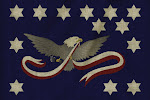Yesterday I was felled, not by in-laws who disapprove, but by in-laws who's profession (running half-way houses and interventions) make me a bit more hesitant to point out my blog than I am to most people. Still, today I've had some time and rather than run stats on old-folk fucking (which I do professionally some of the time) I decided to make some graphs about beer.
As mentioned previously, I'm studying for the BJCP and I have a lot of trouble with the German beers and the statistics. I've not been a huge lager fan (until this course that is) and I can't keep them straight. So graph number 1 today is the IBU over ABV for the styles. The guidelines give a range and I've taken the mid-point, though it is often pointed out that the winning beers are likely to be at the top end of the styles (or beyond). Still, here is graph 1, which includes styles 1d - 4c.
So here we see that in general the high end of the light lager (1d,e), the Pilsner (2), European Amber Lager (3) and Dark Lager (4) varietals all go down in bitterness as the ABV increases, The exception is the American Pilsner, but we over-hop everything compared to Europe. The other is the Dortmunder, which I inlcude here as it is German (ditto the Munich Helles). Still, a tidy way to sort the beers. I also graphed the OG:BU that Ray Daniels talks about in his excellend Designing Great Beers. I've never found that to be too intuitive, but its just a factor change from what I'm doing (as the BJCP almost always figures the FG to be 75% lower than the OG, and ABV is calculated out from that). Still, here it is, again using the OG:BU of the mid-point values.
So, pretty clear that the Oktoberfest will be sweetest, with the Dark American Lager a pretty distant second. The classic American Pilsner, despite my earlier claims- shouldn't seem a more bitter beer, but is just a bigger beer all around. It still strays from the German trend, but... guess what... its not German (thanks in part to the steel machine that was my hometown during the first half of the 20th century).
Now, what of hop aroma and flavor? Here it gets tricky. I've gone back and coded the guidelines to try and quantify the descriptors. The next graph shows hop aroma by SRM.
We see that the darker beers have less hop aroma, with Oktoberfest having none at all allowed. The Munich and Dortmunder have lower levels of hops, while those for the German and Bohemian Pilsners are 'distinctive,' so they could go higher. The American interloper are listed as medium to moderately high, so they could go down. I don't have a ton of experience with these beers so I think some research is necessary. The flavor hop character is similar as the aroma, though the Schwarzbier is allowed some extra hop flavor compared to the other dark lagers.
I have other statistics, but this should work for a start. Requests, corrections, complaints, suggestions and the like are all welcome in the comments!







No comments:
Post a Comment